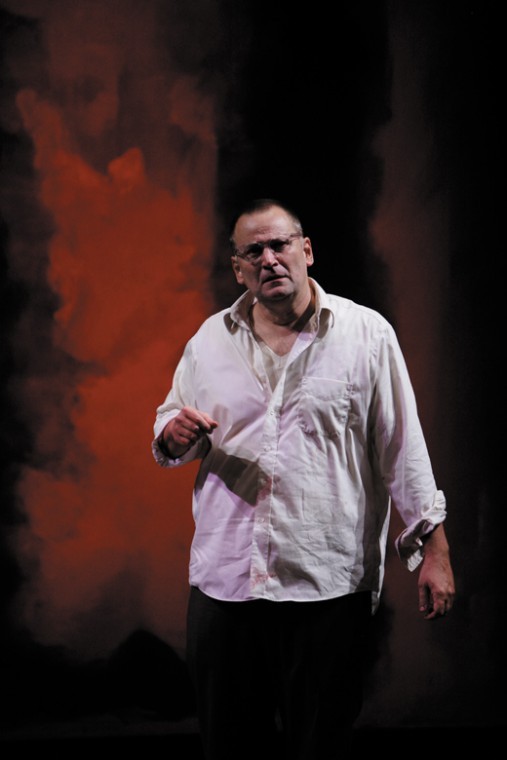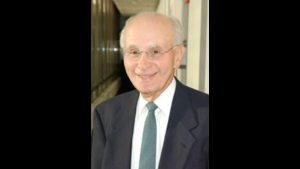Seeing ‘Red’ at The Rep is an artistic, visual feast
Published September 14, 2011
The Repertory Theatre of St. Louis has launched its 45th season with a searing, crackling production of “Red,” which focuses on a key period in the life and career of Mark Rothko, one of the most acclaimed and controversial Abstract Expressionist artists of the 20th century.
John Logan created “Red,” which won the Tony Award for Best Play last year. The Rep’s Artistic Director, Steve Woolf, offers a skillful production for St. Louis audiences.
ADVERTISEMENT
Rothko was born Marcus Rothkowitz in Dvinsk, Russia in 1903. The brilliant, egocentric and highly agitated artist is brought to vivid life by actor Brian Dykstra, who stalks the set – evoking Rothko’s cramped Manhattan studio – like a caged beast, chain-smoking, playing classical LPs and brow-beating his young hired apprentice Ken (portrayed with empathy and credibility by Matthew Carson).
The play’s action takes place during a period in 1958-59 when Rothko is furiously at work on a commissioned project for the ultra-ritzy Four Seasons restaurant, for which he has already received a princely (for those days) advance of $35,000.
Early on, it is apparent that Rothko is both an ingenious, innovative artist and a deeply conflicted man. He recalls with pride how he and the other members of the so-called New York School of Abstract Expressionists “finished off” the Cubism of Picasso and Braque, but his young apprentice torments him with reminders of the emergence of “Pop” artists such as Roy Lichtenstein and Andy Warhol, whose depictions of banal subjects like comic strips and Campbell’s soup cans threaten to supplant artists of Rothko’s era. He boasts of his early friendship with Jackson Pollock, but later makes fun of the artist’s signature “drip” paintings and notes that he ultimately “sold out” by allowing himself to be featured in a Life magazine spread and by becoming famous.
Rothko was 10 when his parents immigrated to the United States in 1913, settling in Portland, Ore. He attended Yale University on a scholarship and later moved to New York where he studied at the famous Art Students League with Max Weber.
ADVERTISEMENT
A former yeshiva student, Rothko was commissioned to draw maps for Rabbi Lewis Browne’s book “The Graphic Bible.” He was initially influenced by the Surrealists but later joined the Abstract Expressionist school. As he began to attract favorable reviews, his agent suggested that he change his name from Marcus Rothkowitz to Mark Rothko, “since there already are too many Jewish artists.”
Despite his name change and rejection of formal religion, Rothko remains strongly aware of his Jewishness and is even described by Ken as having a “rabbinic”- or deeply reasoned-approach to his work.
Rothko evolved into his signature style of what some have called “a series of rectangular shapes with fuzzy borders,” typical of which is his “Green and Tangerine on Red” (1956), a large canvas of two flat rectangular shapes of thin color, which filled the canvas with nearly translucent hues that seem to float on the surface of the composition. He used this formula with various color variations, including the dominant “Red” theme of the panels on which he is working for the Four Seasons project depicted in the play.
Rothko constantly obsesses about his place among the Modern artists, including Picasso (whom he ridicules for “signing napkins for money”) and places himself in the pantheon of the greatest of artists.
The color “Red” has a whole host of meanings for both Rothko and Ken. The very name “Rothko” is derived from “Roth,” which can be Yiddish or German for “red.” In one sequence in the play, Rothko and Ken free associate what comes to mind with the word “red”: blood, apples, tomatoes, passion, the Communists, Nazi flags, anger and lust. Ken, the patient and outwardly quiet apprentice to the mercurial and often abusive Rothko, has his own traumatic association with the color red involving a violent incident in his childhood. Rothko resists being a father-surrogate or even a mentor to Ken, who nonetheless loyally serves Rothko throughout his two-year paid apprenticeship.
The play, which is non-stop with no intermission, keeps the two actors on stage for nearly the entire production. It is also surprisingly “athletic,” with Dykstra as Rothko and Carlson as Ken moving large prop reproductions of Rothko’s panels around the cramped replication of Rothko’s Bowery Street studio, placing the canvas on the boards, and in one sequence, filling the white space with a tone of red base paint, which reminds Ken of “dried blood.”
Set designer Michael Ganio and his crew deserve applause for their reproductions of Rothko’s panels, which under the rules of the production must be destroyed after the play completes its local run. Phil Monat’s lighting design, which edges several scenes in shockingly bright red, also enhances the production. Woolf’s direction paces and interweaves the action seamlessly throughout.
For a true artistic and visual feast for the mind and the senses, do not miss “Red.” It packs quite a punch as it reminds us what great theater is all about.
‘Red’
WHEN: Through Oct. 2
WHERE: The Repertory Theatre Mainstage, 130 Edgar Road, Webster Groves
HOW MUCH: $16-$72
MORE INFO: 314-968-4925 or www.repstl.org.















